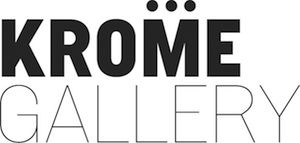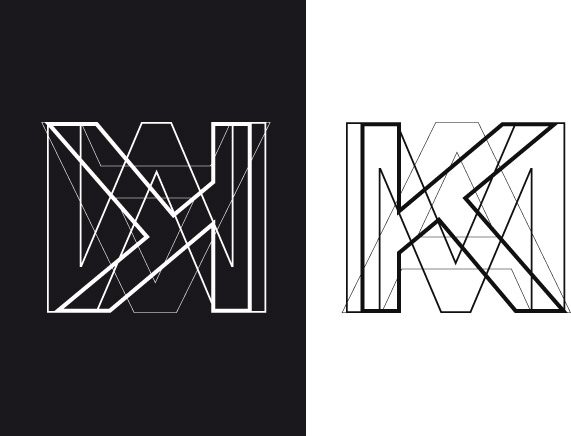•
KMA GROUP SHOW
26.06. – 07.08.2010
OPENING: FRIDAY 25 JUNE 2010, 6 – 9 PM
•
click the picture to launch gallery
•
"KMA Group Show" is the first group exhibition at Krome Gallery giving a selective insight into the ongoing development process of the gallery's program after almost one year of regular exhibitions. Three of the altogether seven positions have already had solo exhibitions at Krome Gallery in the past while four of them have been especially invited to participate in the "KMA Group Show". Almost all of the works on view are installation-based and thereby comprise a wide range of media from sculpture to photography, painting, sound and graphic design.
The abbreviation "KMA" within the exhibition title stands for the venue's site, Karl-Marx-Allee, in whose architecture the gallery is strongly embedded. The works selected for the exhibition can be linked on different levels to the histo-rical, political and aesthetical implications of the boulevard which had a highly representational function during the GDR. In this sense the exhibition title's seemingly neutral part "Group Show" points to the issue of collective repre-sentation and its boundaries, whether referring to exhibition discourses, gallery programs, political ideas or joint interests in general. The exhibition's logo, in turn derives from a campaign for an art, design and gastronomy flyer initiated in 2009, which was meant to represent about 20 participants located alongside Karl-Marx-Allee. In the end, however, it has not been produced in that form.
1 •••
Leipzig and Berlin based artist Regine Müller-Waldeck (*1975) constructs her objects and installations mostly from scanty materials and sees them as 'psycho-social landscapes' whose associative potential she mobilises to create awareness of the contingency of socially protective and supportive constructions and to make them experience-able. In "Separation / Wehr" (Separation / Defence) the viewer passes through a fragile collective of unstitched pleated skirts which evoke an image of corrugated iron of the kind that afford scant shelter to slum dwellers.
Simultaneously the dark plissé stands in its stringent form and harsh materiality for a militarily uniform disciplining of the body and conditioning of the subject. Until 2008, Regine Müller-Waldeck was studying under Astrid Klein and Timm Rautert at the HGB Leipzig. She received several grants, among them being the Cultural Foundation Saxony, which afforded her a stay at the ISCP in New York. She had her first solo exhibition in 2006 at the Museum of Contemporary Art Leipzig, where she received an art prize presented by Dresdner Bank in 2008. Her exhibition at Kunsthalle Mannheim won her a nomination for the Hector Award for Emerging Artists. After showing at Temporäre Kunsthalle, she will have her next solo exhibition in Berlin at Klemm's Gallery this fall.
2 •••
Internationally renowned with Surface, his agency for corporate cultural design, German graphic designer
Markus Weisbeck (*1965) had his first exhibition with freely created works last year at Krome Gallery. The work "IBKDL" (I am not a democratic country) is deliberately shown once again in "KMA Group Show". While visually referring to the aesthetics of the late 1980s the image’s polemic statement points ironically to the generic mecha-nisms of a group exhibition, a gallery program, an art district or a social structure and its aesthetical represantations.
3 •••
The English artist Ivan Seal (*1973) creates site-specific installations combining painting and sound. For "KMA Group Show" he has compiled an ensemble of small format paintings and a computer generated sound piece
reminiscent of dadaist techniques. For the past year Seal has been creating a continuously growing volume of small to middle format oil paintings in a naturalistic manner depicting recurring motifs against undefined spaces. We see amorphous cubes and cuboids seemingly made of clay, held, connected or pinched with strings, placed on plinths, studded with matches, nails or cigarette stubs that Seal examines in trompe-l'œil fashion. Both the automated sounds of fragmented speech and the paintings, where spaces and objects are loosely interlinked beyond their margins, point to an oneiric realm between the fictive and the real space. Ivan Seal has been living in Berlin since 2004 where he has had several exhibitions and performances, at Julius Werner Galerie amongst others. Parallel to a show by Manfred Pernice Ivan Seal’s exhibition "I learn by osmosis" is currently on view at CEAAC Strasbourg.
4 •••
Wiebke Elzel and Jana Müller (both *1977) already started an intense collaboration in 2001 while studying photo-graphy at HGB Leipzig. This led to large-staged photographs alluding to social catastrophies and collective fears as subject matter. Analogously, they create photographic series that document urban, geographical and geopolitical processes of dissolution. The exhibited series "Land II", also shows this by depicting abandoned and deserted, and partly-drowned islands from the lagoon of Venice. A map is printed on each photograph’s back side indicating the respective island by its name and position with a stamp. Wiebke Elzel and Jana Müller are currently living in Leipzig and Berlin. Their conjoint works was lastly shown at Kunsthalle Rostock and Fotogalerie Wien. Their individual oeuvres have been presented at Schütte Gallery, Essen, where Wiebke Elzel’s solo exhibition "For the Birds" is
currently on view.
5 •••
Hannes Broecker (*1980), participant of this year’s sponsorship programme "New Positions" at the Art Cologne, de-votes himself to the iconography, the systems and structures of public, and predominantly urban space. He transfers fragments and abstractions from street, sub- and pop-culture into his works of art, which include sculptures, assem-blages and installations. He has been working on this project since the start of his study of the "interdisciplinary and experimenta painting" at an art academy in Dresden. Hannes Broecker is represented by Baer Gallery, Dresden.
6 •••
BURGHARD signifies the Berlin based artist couple , Romy and Stef Richter (*1977, *1971) , who have been colla-borating since 2002. With their objects, installations and collages that often consist of found material, BURGHARD creates poetic situations through simple inversions. By doing so, they raise questions of architectural, linguistic and iconographic matter, which sometimes even leads to the (seemingly) disappearance of the work itself. In this sense, the installation of seven used mirrors under the gallery’s ceiling is a gesture of invisibility and refusal. The original purpose of the mirrors is refused and instead their differently colored back sides face the viewers. In ist simplicity the work is visually comprehensible, however it creates an abstract space above the mirrors. Romy Rich-ter studied product design in Dresden and typography in Berlin. Stef Richter studied art in Dresden and in the class of Heimo Zobernig in Vienna. Apart from contributions at group exhibitions (at Kunstverein Bregenz and Manifesta 7 a.o.), their last solo exhibitions were held at Kunstverein Arnsberg and at the Communal Gallery of Wolfsburg.
7 •••
Tarje Eikanger Gullaksen was born 1973 in Norway and moved to Berlin after his studies in fine arts and art theory at The Royal Danish Art Academy, Copenhagen in 2005. Taking an investigative, research-based approach, Tarje Eikanger Gullaksen works with a wide range of media, such as text, installation, sculpture, and drawing.
Since 2009 he has devoted himself to film projects, which led to "Unfinished Symphony," a filmic portrait, about the laboratory of the psychiatrist and psychoanalyst Wilhelm Reich (1897-1957), that has been presented at Krome Gallery this year. At the moment, Gullaksen is doing a post production of the film, for which he had recei-ved working grant in China recently. In "KMA Group Show," one of his few 'paintings' is presented as a paint page of Walter Benjamin’s "Arcades". Benjamin, in turn, quotes a long section from "Eternity through the Stars" a text by the French revolutionary and early socialist Louis-Auguste Blanqui (1805-1881).
8 •••
Icelandic artist Darri Lorenzen (*1978) makes site-specific space installations that sometimes take over the
whole place. He applies media like sound, light, architectural objects, computer simulation or photography.
Basically, he aims to develop performative models and strategies for a sensible experience of space, time, and
body. As in Lorenzen’s exhibition "In Point of Fact" at the Krome Gallery last year, the viewer becomes part of the work itself in "KMA Group Show", too. He realized a number of performing projects while still studying at the art academy in Reykjavik and the Interfaculty Image & Sound of the academy in Den Haag before moving to Berlin in 2005. Darri Lorenzen gained several grants from the Center for Icelandic Art, Reykjavík, as well as the Dungal Art Prize in 2007. He is represented in the collection of Thyssen-Bornemisza, Vienna, and in a couple of publications, such as "Younger than Jesus: Artist Directory" (Phaidon Press, 2009) and "Icelandic Art Today" (Hatje Cantz, 2009).


